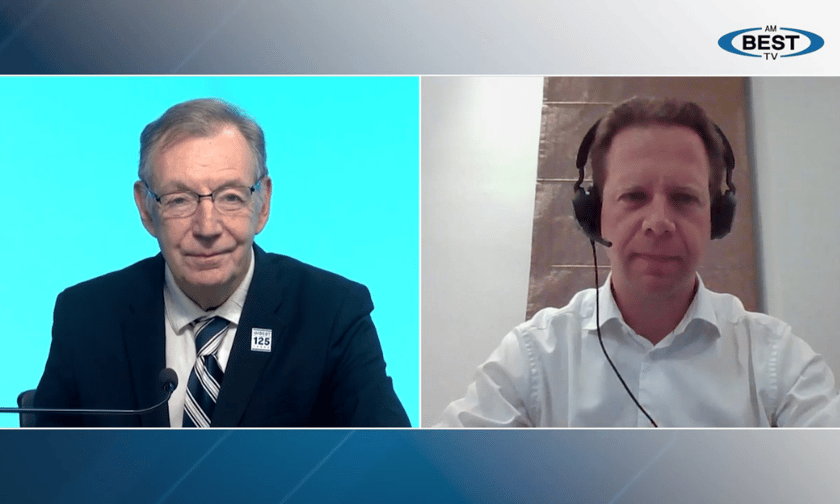

In 2023, the global reinsurance market saw a significant 12% increase in capacity, reaching $729 billion, according to Gallagher Re’s latest report. This growth was fueled by substantially improved profitability. Return on equity (ROE) also surged, rising from 7.1% in 2022 to 20.2%, the highest level in a decade.
John Weber of AM Best TV spoke with Michael van Wegen (pictured), head of international client and market insights at Gallagher Re, to explore these developments.
Van Wegen explained that the rise in dedicated capital in the global reinsurance market in 2023 was fueled by both traditional and alternative capital. Traditional capital, which remains the dominant source, saw growth primarily due to strong net income.
“This is reflective of the strong 20% ROE delivered in the year,” van Wegen noted. He said, in addition, the recovery in financial markets contributed to the reversal of unrealized gains and losses on investment portfolios. However, he also noted the inflow of new capital in the traditional market was limited, amounting to just $2 billion in 2023.
Underlying ROE increased to 14.3% in 2023 from 12.0% in 2022, staying above the cost of capital for the second consecutive year. Van Wegen said this improvement was driven by two main factors: underwriting margins and running investment income. Contributions to the underlying ROE from underwriting margins nearly tripled to 2.8%, due to price increases and an improved combined ratio. Running investment income rose to 10.4 percentage points from 7.0, reflecting higher reinvestment returns amid globally increased interest rates.
It was noted that the reinsurance industry struggled to meet the cost of capital for almost a decade before 2022. Van Wegen emphasized the importance of demonstrating the industry’s ability to deliver appropriate returns over time to attract new capital. The materially improved underlying profitability enhances the industry’s resilience, enabling it to better absorb potential volatility, such as natural catastrophe losses.
Van Wegen noted a decline in the impact of natural catastrophes (nat cats) on the combined ratio for reinsurance, which fell to 6.7 percentage points in 2023 from 10.3 percentage points in 2022. Despite overall insured losses exceeding $100 billion for the fourth consecutive year, reinsurers’ share of these losses declined. Van Wegen said this change reflects adjustments in attachment points and terms and conditions since the January 2023 renewals. Additionally, 2023 saw fewer major hurricane events and more convective storm activity compared to previous years.
Van Wegen highlighted the industry’s improvement in underlying ROE, marking an exceptionally strong year with a 20% ROE, the best in the past decade. This performance has helped the industry recover from weaker profit years (2017-2020) and achieve an ROE above the cost of capital for the 2017-2023 period on aggregate.
Looking ahead, van Wegen indicated likely upward pressure on the underlying ROE, given current interest rate levels and recent rate increases. He expects the underlying ROE to potentially improve by two to five percentage points over time. However, the overall outlook remains uncertain, contingent on nat cat activity and financial market developments throughout the year.
Have something to say about this story? Leave a comment below.
Photo credit: AM Best.
